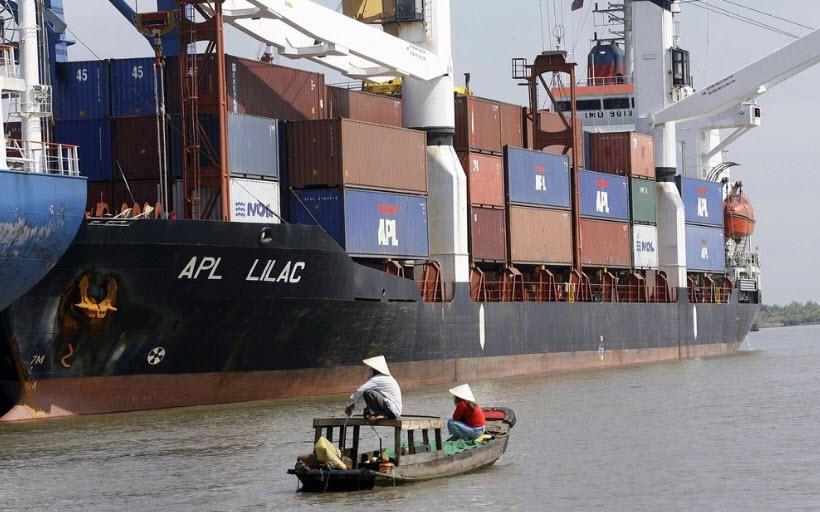Das Warns 'Prepare For Turbulence In Emerging Markets'
Authored by Satyajit Das, op-ed via Bloomberg.com,
Encouraging trends in emerging markets belie their volatility since the taper tantrum of 2013, when the Federal Reserve signaled it was pulling back on quantitative easing. Further turbulence is likely, despite the improving outlook for advanced economies, easing trade tensions and accommodative monetary policy.
The International Monetary Fund estimates that growth in developing countries fell to 3.7% last year, the slowest pace since 2009 and well below the IMF’s July 2019 forecast of 4.1%. An expected rebound to 4.4% this year assumes highly uncertain recoveries in stressed economies such as Argentina, Iran and Turkey, as well as in countries where growth has slowed significantly — China, Brazil, India, Russia and South Africa among them.
Rising friction in the Middle East, if sustained, could result in higher energy prices and supply disruptions for developing countries. India, which recently downgraded growth for the 2020-21 fiscal year to 5%, the slowest pace in a decade, imports more than 70% of its oil needs. A price rise of $10 per barrel widens the current account deficit by 0.4 % of gross domestic product. Every increase of 10% adds 0.2% to the rate of inflation, which is already above the Reserve Bank of India’s 4% target.
Higher borrowing costs and a stronger U.S. currency due to haven demand would hurt developing countries. Between 2010 and 2018, low exchange-rate volatility and high interest-rate differentials caused non-bank financial institutions in emerging markets to double their U.S. dollar-denominated debt to $3.7 trillion. Much of this is unhedged.
Further geopolitical risks include North Korea’s missile-rattling, challenges in Hong Kong and Taiwan to Beijing’s assertions of authority, and China’s territorial maritime disputes with its neighbors. Japan and South Korea are contesting matters arising from World War II. India’s proposed changes to citizenship laws and the status of Kashmir is fomenting domestic unrest and tensions with predominantly Muslim Pakistan and Bangladesh.
Meanwhile, the spread of a new virus that originated in China threatens to depress retail sales and tourism in Asia, helping to bring a global stock rally to a halt last week.
These stresses exacerbate long-term structural problems. The early 2000s and the period immediately following the global financial crisis saw a synchronized acceleration of growth across the world. But advanced economies have slowed and their long-term potential rate of expansion has fallen.
The latest IMF estimates released last week have growth in advanced economies stabilizing at 1.6% in 2020-21, compared with 2.3% in 2018 and 0.1 percentage point lower than in its October forecast. Underlying this stagnation is the flagging potency of debt-fueled growth, flat productivity, limited policy options, and unfavorable demographics. Emerging economies cannot rely on historic demand for exports to drive future expansion.
Despite the U.S.-China phase one trade agreement, conflicts won’t abate. Sino-American trade tensions alone will cumulatively reduce the level of global GDP by 0.8% by 2020. The Trump administration also has trade disputes with the European Union, Australia, India and Vietnam, among others. France and the U.S. are trying to de-escalate threatened tariffs on champagne and cheese in retaliation for a digital tax affecting Alphabet Inc.’s Google and Amazon.com Inc.
Trade volume growth fell to about 1% in 2019, the weakest level since 2012. The retreat from a rules-based trade system and the weaponizing of trade interdependence will damage everyone.
In the past 20 years, China, a crucial driver of emerging markets, went from a 10th to two-thirds the size of the U.S. economy, assisted by trade within the WTO framework. Today, China’s blacklisted Huawei Technologies Co. relies on chips designed in America while advanced economies benefit from its cheaper and often cutting-edge 5G technology. Three-quarters of the world’s smartphones, mostly made in emerging markets, use Google’s Android mobile operating system. American restrictions hurt developing nations as well as consumers in advanced economies.
In a world of limited demand, irrespective of leadership or ideology, governments everywhere face a mounting anti-globalization backlash. Nationalist agendas and a shift to autarky – closed economies – will persist. A return to strong growth in trade and cross-border capital flows seems unlikely.
This affects developing-world economic models. Lower-income nations focused on export-oriented industries, such as textiles and manufacturing, exploiting cheap costs. Now, weak demand and trade disputes limit this option. Higher-income developing countries face technology transfer restrictions that affect improvements in productivity.
Meanwhile, automation decreases the advantages of low-skilled, cheap labor and offshoring. Bringing manufacturing home to advanced economies decreases companies’ exposure to disruption, currency fluctuation and political interference. The failure of Prime Minister Narendra Modi’s “Make in India” strategy reflects these shifts. India has failed to produce the 1 million new jobs per month needed to absorb new entrants into the workforce. Indian Railways recently received 23 million applications for 90,000 vacancies.
Slower growth creates a dangerous feedback loop. Dissatisfaction with improving ordinary lives can prompt civil unrest. Countries rich in scarce resources, or having large internal markets such as China, India, and Indonesia, may muddle through.
Others will struggle. Rising nationalism and protectionism are likely outcomes, and will only deepen the wedge between advanced and emerging economies. It will make an interesting if rough ride ahead for investors.
https://ift.tt/38JdGqK
from ZeroHedge News https://ift.tt/38JdGqK
via IFTTT





0 comments
Post a Comment